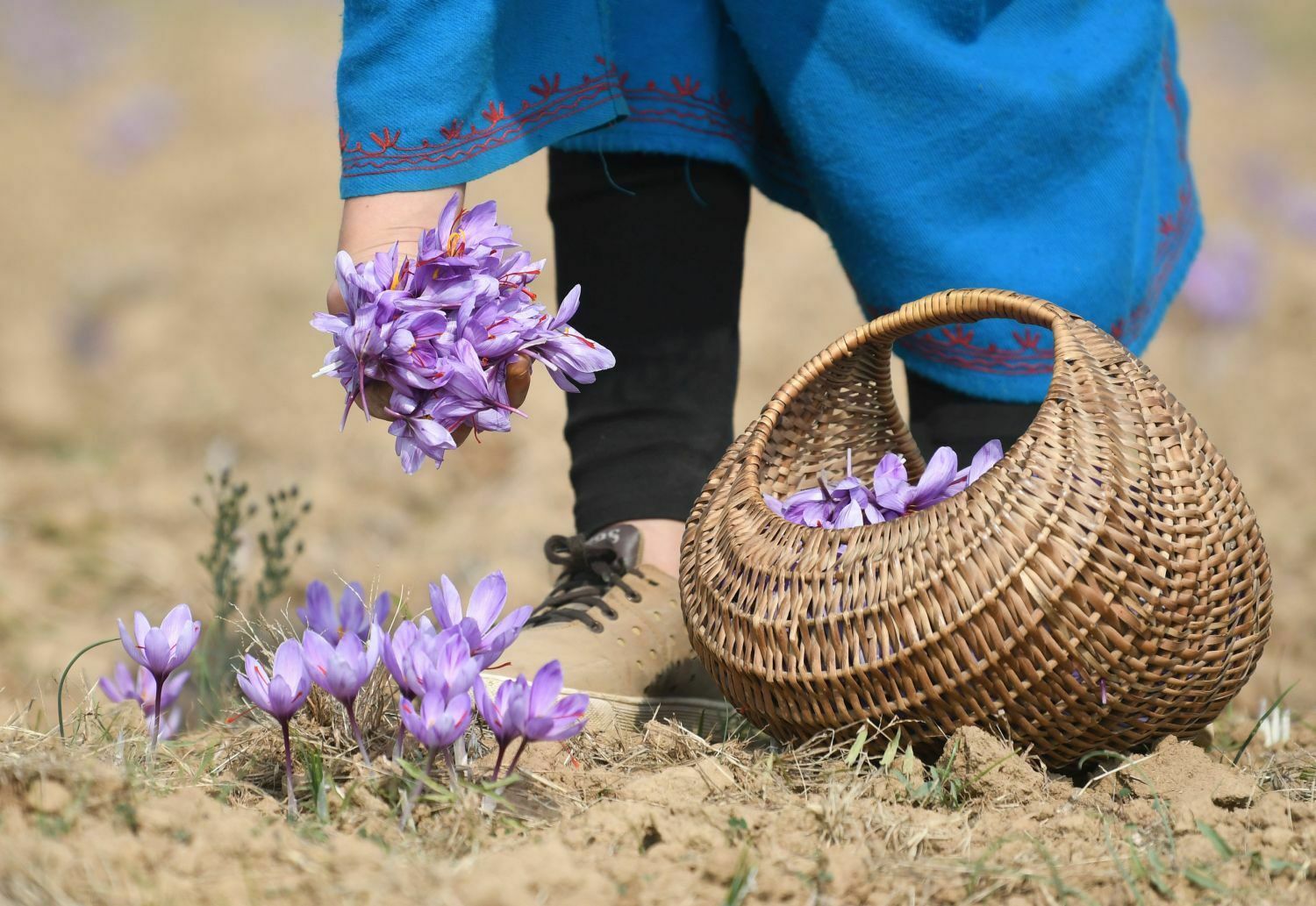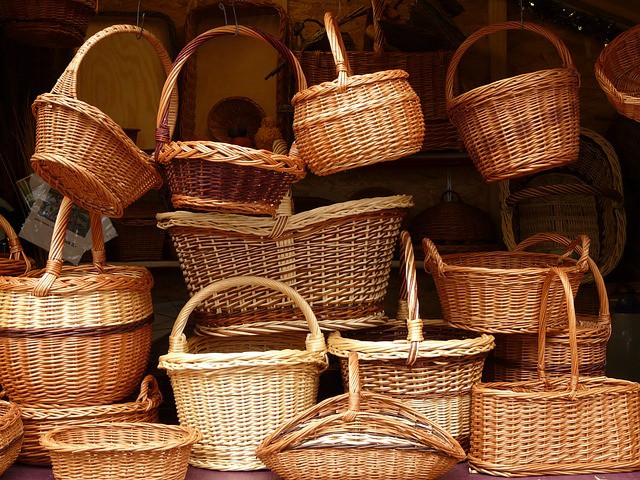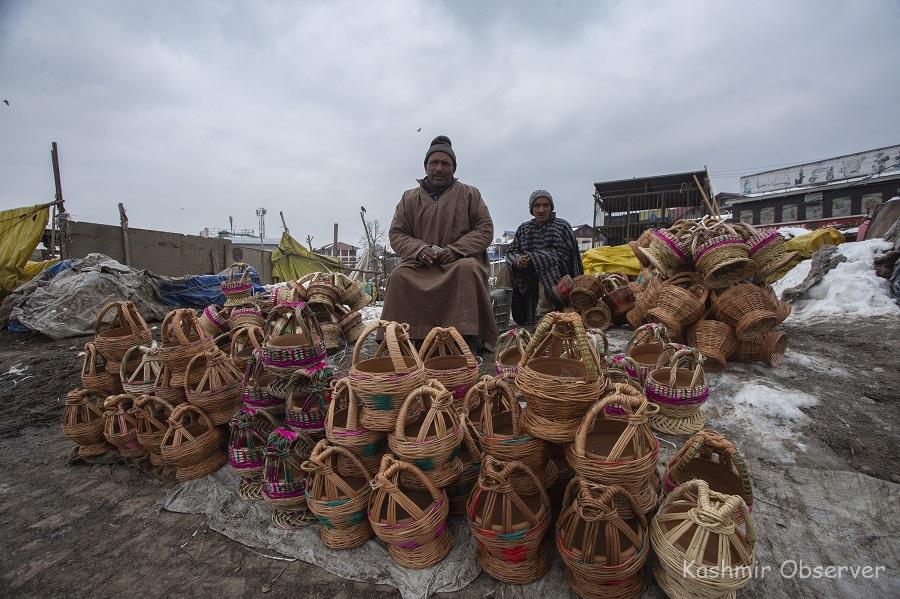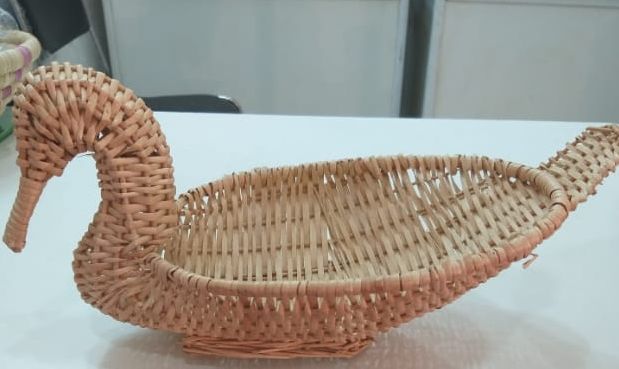
By Sadaf Fayaz
WILLOW wicker craft locally called “kaeni keam” is the intricate art of basket weaving. It is an indigenous business industry of Kashmir using twigs of wicker as raw material. It is one of the oldest crafts of valley. The products of the craft once seen in every home are now witnessing a decline.

This craft is also known as Shaakhsaazi. The word “Shaakhsaazi” comprises of two words, “shaak” meaning slender pliable branches and “Saazi” meaning the act of weaving. The journey from raw wicker prunes to decorous creations is a very interesting one. The journey starts from harvesting the willow twigs. These twigs are then grouped according to the required length and breadth called “withe”. Withe is a strong flexible willow stem which is boiled and peeled subsequently. Withies are used as raw materials for manufacturing different willow products. A special apparatus, Zelan is used to peel off the bark from boiled withies. Zelan is the pair of 3 ft long sticks bound together tightly. Then they are tied into bundles and sold to workers as raw material. Several products are made from Wicker. The main wicker willow handicrafts are tokris, dry-fruit bowls, round cups, decorative ducks, buckets, chapatis, kangris, etc.

Wicker willows are found in wetlands as well as in rice fields. Farmers in Ganderbal cultivate this species in rice fields for commercial purposes. They cultivate willow plants from saplings. When saplings begin to sprout, they are then planted into the land to harvest its shoots every year. The best season for sowing of saplings is February to March. Usually, Willow plants grow upto 2-3 metres in height and the crop is harvested in October.
Jammu and Kashmir enjoys a monopolized market for wicker craft. Wicker craft is a small-scale forest based cottage industry. It plays an important role in the livelihood of stakeholders involved. Products from this craft like basket ducks and vases are used for decoration. The chairs, trays, baskets swings, trays, cradles, and the kangri are used as home utility. Willow products mark the sign of royalty on occasions like weddings and are also used by world class resorts.

Wicker craft in Kashmir has undergone a number of uneven circumstances. Chinese products and plastic are trying to take the place of wicker willow products due to their finish. Opting white collar jobs and the callous attitude of the government are the reasons that the craft is losing its legacy. With advancing living standards of people, artisans have brought innovative changes to the old designs. Designs include weaving in several directions and dyeing wicker willow to blue red or green to reclaim the declining market again.
- Writer is a student at Faculty of Forestry SKUAST-K. With Thanks to Dr Anup Raj for guidance
Follow this link to join our WhatsApp group: Join Now
Be Part of Quality Journalism |
Quality journalism takes a lot of time, money and hard work to produce and despite all the hardships we still do it. Our reporters and editors are working overtime in Kashmir and beyond to cover what you care about, break big stories, and expose injustices that can change lives. Today more people are reading Kashmir Observer than ever, but only a handful are paying while advertising revenues are falling fast. |
| ACT NOW |
| MONTHLY | Rs 100 | |
| YEARLY | Rs 1000 | |
| LIFETIME | Rs 10000 | |










